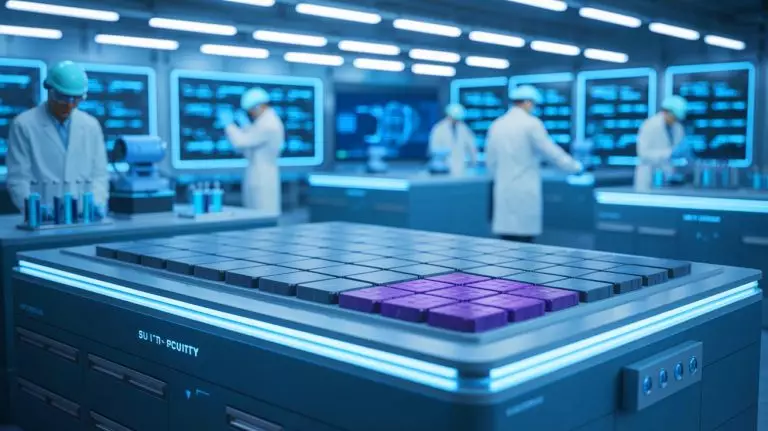| IN A NUTSHELL |
|
In a world constantly seeking more efficient and safer energy solutions, solid-state batteries have emerged as a beacon of hope. Recent developments from the Technical University of Munich (TUM) might be the breakthrough needed to propel these batteries into mainstream use. By enhancing lithium-ion conductivity by over 30%, a team of researchers has potentially unlocked a new chapter in energy storage technology. This article delves into their groundbreaking work, exploring its implications for future materials and energy storage systems.
Vacancies Supercharge Ion Flow
At the heart of this innovation is a novel material composed of lithium, antimony, and scandium. The researchers have cleverly engineered vacancies in the crystal lattice structure, allowing lithium ions to flow more freely. These vacancies essentially act as highways, significantly boosting ion mobility compared to existing materials. This is not just an incremental improvement; it sets a new world record for lithium-ion conductivity in solid-state materials.
The significance of this breakthrough extends beyond academic achievement. Faster ion flow translates into faster charging times and more efficient energy storage, a critical factor for consumer electronics and electric vehicles. Given the remarkable results, the team enlisted the expertise of colleagues at the Chair of Technical Electrochemistry at TUM to independently validate their findings. This collaboration underscores the robustness of their results and adds a layer of credibility to the exciting claims.
Blueprint for Future Materials
The implications of this discovery are vast. With exceptional ion mobility, this material could pave the way for safer and more efficient batteries. According to Prof. Thomas F. Fässler, incorporating small amounts of scandium has unveiled a new principle that could guide future material combinations. While the material is not yet ready for commercial battery cells, the team is optimistic about its potential applications.
Moreover, the material’s dual conductivity—both ions and electrons—makes it a valuable additive for electrodes. The practical benefits are so promising that the team has already filed a patent. This innovation is not just about one discovery; it represents a new direction in solid-state battery research, potentially setting a standard for others to follow. The research, published in the journal Advanced Energy Materials, signals a turning point in the quest for superior energy storage solutions.
Expanding the Horizon of Energy Storage
Besides breaking records, the material boasts thermal stability and can be synthesized using established chemical processes. This makes it a viable candidate for large-scale production and real-world applications. The research also opens the door to a new family of substances that could enhance ion conductivity across a broader spectrum of lithium-based materials.
Jingwen Jiang, a lead scientist on the project, points out that the same concept could be applied to lithium-phosphorus systems, simplifying the elemental combinations needed for optimization. Unlike previous record holders that required multiple elements, this approach only needs scandium as an additional component. The research was funded by the Bavarian State Ministry of Economic Affairs and Regional Development and Energy, highlighting the strategic importance of such advancements for both academia and industry.
Charting the Course for Future Innovations
This breakthrough illustrates the power of innovative thinking in solving complex challenges in energy storage. By focusing on elemental combinations and crystal lattice engineering, researchers have not only achieved record-breaking performance but also laid the groundwork for future advancements. The work done at TUM serves as a blueprint for how targeted research can lead to transformative discoveries.
As we look to the future, the potential applications of this technology are vast. From powering electric vehicles to enhancing the performance of consumer electronics, the implications are far-reaching. These advancements could very well set the stage for the next generation of energy storage solutions, revolutionizing how we think about and utilize energy.
As we stand on the brink of this exciting new era in energy technology, one must wonder: what further innovations will emerge as we continue to explore the untapped potential of solid-state materials?
Did you like it? 4.6/5 (22)







Wow, this sounds like a game-changer for the battery world! How soon can we expect this technology in consumer products? 🔋🚀
Is the scandium used in the batteries sustainable and widely available? 🤔
Uhh, 30% faster charging? My phone battery is already crying with happiness! 😂
This could be huge for electric vehicles! I hope Tesla is reading this. 🚗⚡
Thank you for the detailed article. It’s encouraging to see such advancements in energy storage technology. 🙏
Solid-state batteries have been “just around the corner” for years. I’ll believe it when I see it in my gadgets.
Hina, you really need to stop writing articles. You are terrible.